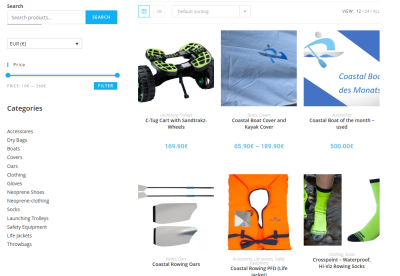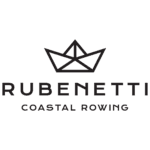We are coming close to the end of the coastal rowing season. Most of us will be preparing our boat for winter storage. No question: we have to clean the boats for storage and even polish them a bit to remove the small scratches on the hull. Over the next few weeks we will post on our work and let you know what you need to do for winter storage. We start with the question of how to clean your coastal rowing boat. Later on we write about how to properly polish scratches from the boat and
we also carry out minor repairs.
So let’s talk about cleaning. Why should you clean your Coastal boat?
Dirt on the boat means additional friction in the water
Dirt on the boat means less brilliance
Dirt on the boat can dry out, cause chafing or lead to additional UV exposure
When to clean your coastal rowing boat?
We think the main reason is to remove the salt water from the boat. If you don’t rinse the salt water off the hull, you might get rust on some metal parts. Not all boats have good, well-made stainless steel parts. So make sure you rinse your boat with water or even soapy water. Salt residue, sand and other dirt clog the hull structure over the season and build up over time.
TIP: Don’t wait until spring to clean: In autumn, these dirt residues and particles can be better removed from the surfaces because the dirt on the hull surfaces may not have completely dried yet. However, once the boat is stored warm and dry in your boat house, the dirt and especially salt has plenty of time to really settle on the GRP and in the corners and joints of the riggers and stretchers. Cleaning in spring is often much more difficult and time-consuming than in autumn.
How to clean your coastal rowing boat?
- Rinse off with water (hose or sponge). As a first step, we recommend completely hosing down the boat to remove salt water, sand and dirt residue.
- Prepare a soapy water solution in a 10 liter bucket. Mike Davenport prepared a mixture of about 1 part soap and 10 parts water. Then scrub it over the torso with a sponge or soft pad. This usually removes around 80% of the dirt.
- For the remaining dirt that you can’t get rid of, you may have to use other tools (solvents). The adhesive for start numbers or boot IDs in particular tend to stick. I like to work with silicone cleaner and acetone. The latter is very effective. I apply the product sparingly to a cloth and wipe the protected area with light pressure. Don’t use too much. Acetone in particular dissolved the gelcoat, i.e. the skin of the Coastal boat. Solvents have volatile components. Disposable gloves and protective masts provide useful protection.
- Dirt in small scratches. This is where things get critical. Sometimes solvent do not work. There are many tools to solve such protection. Polishing agents. Unfortunately, the some names are very misleading. Super Polish, abrasive polish, gloss finisher, etc. If you are looking for such a cleaning solution, prepare yourself and use more helping tools. You will find our post about this here in 14 days.
- Using sandpaper: Yes, that is a good solution. But only in conjunction with a polishing machine or polishing cloths. Before you start –> inform yourself.
The question of how to clean your coastal rowing boat is easy to answer. And remember: after the season is better than before the season.







